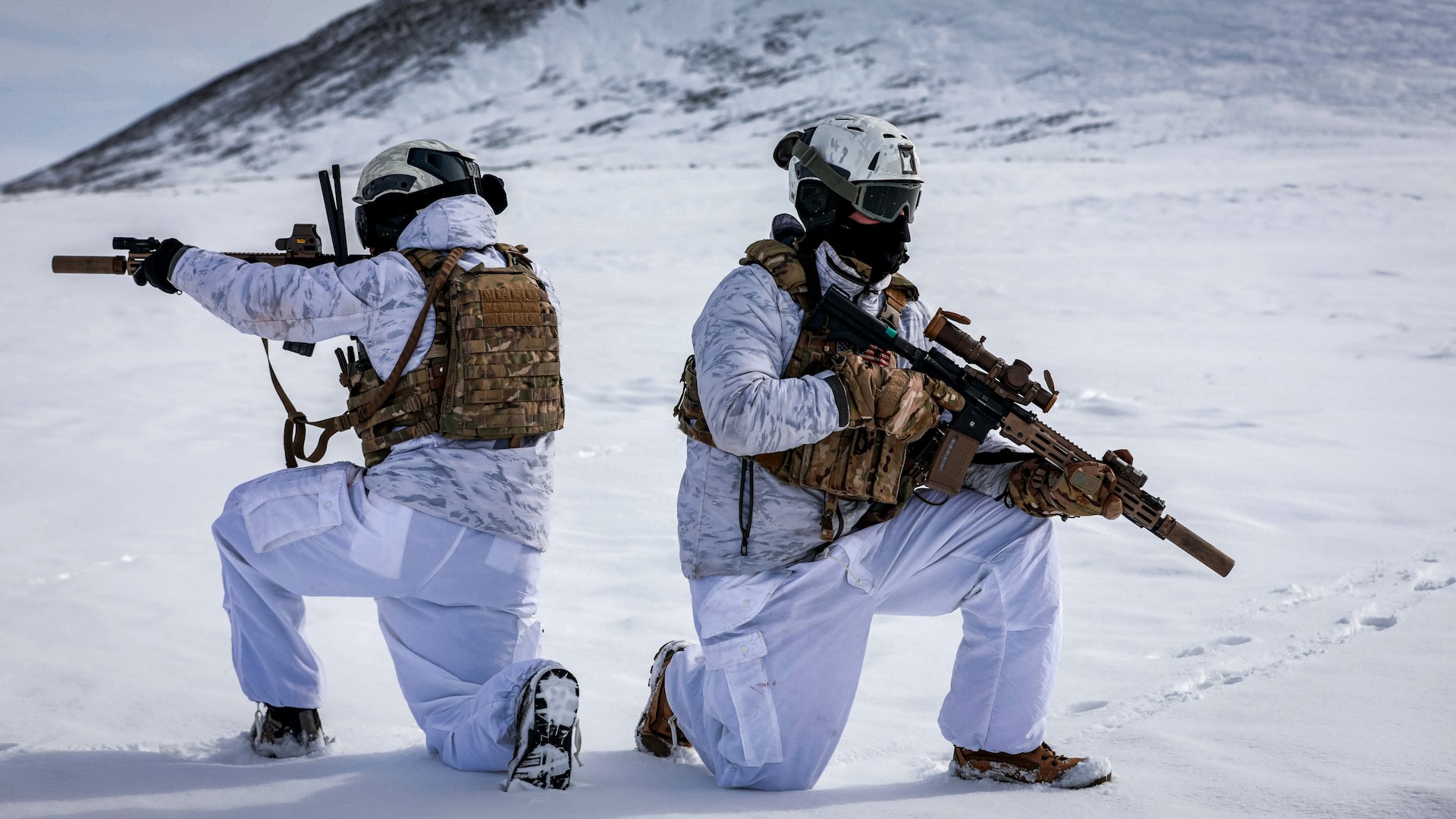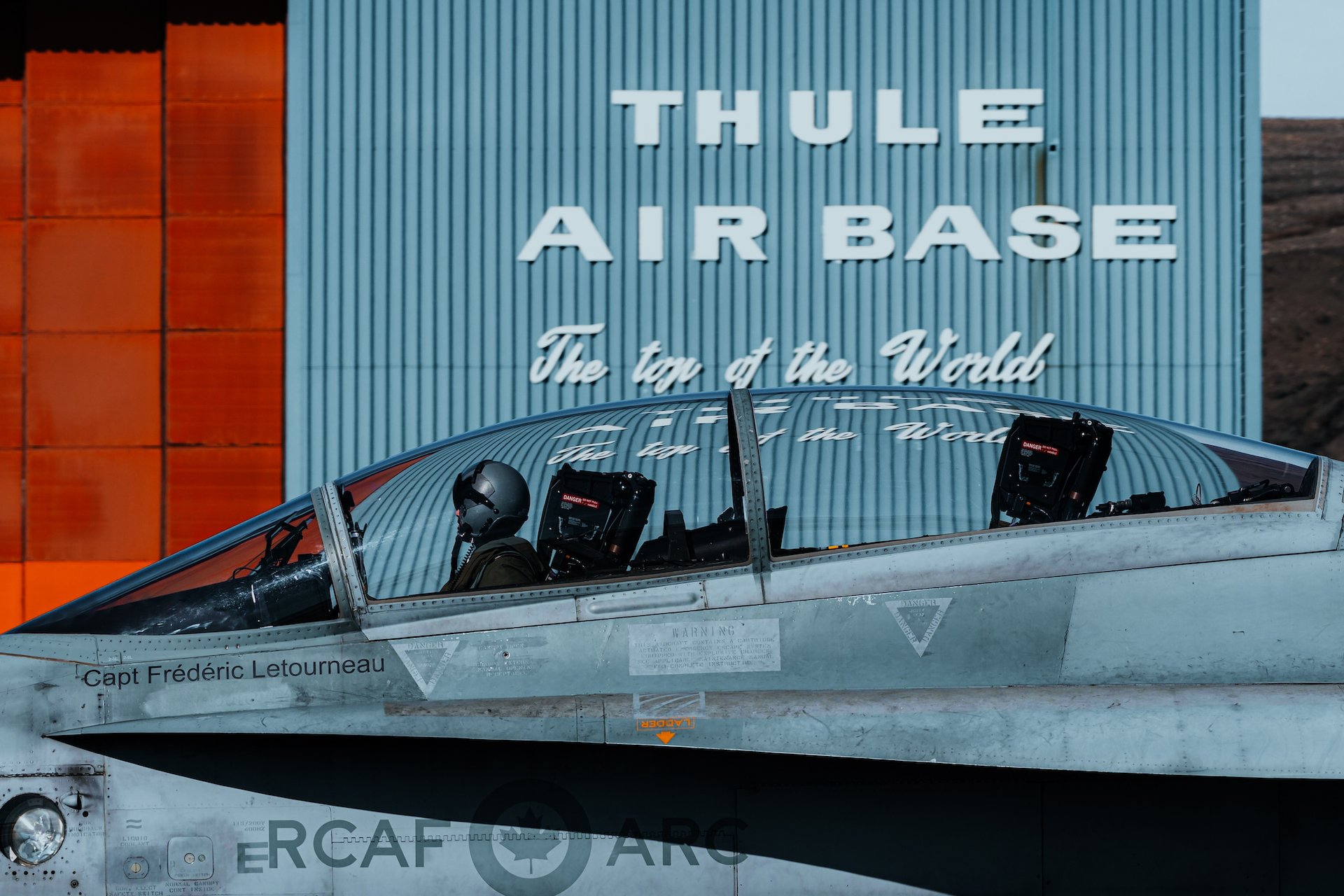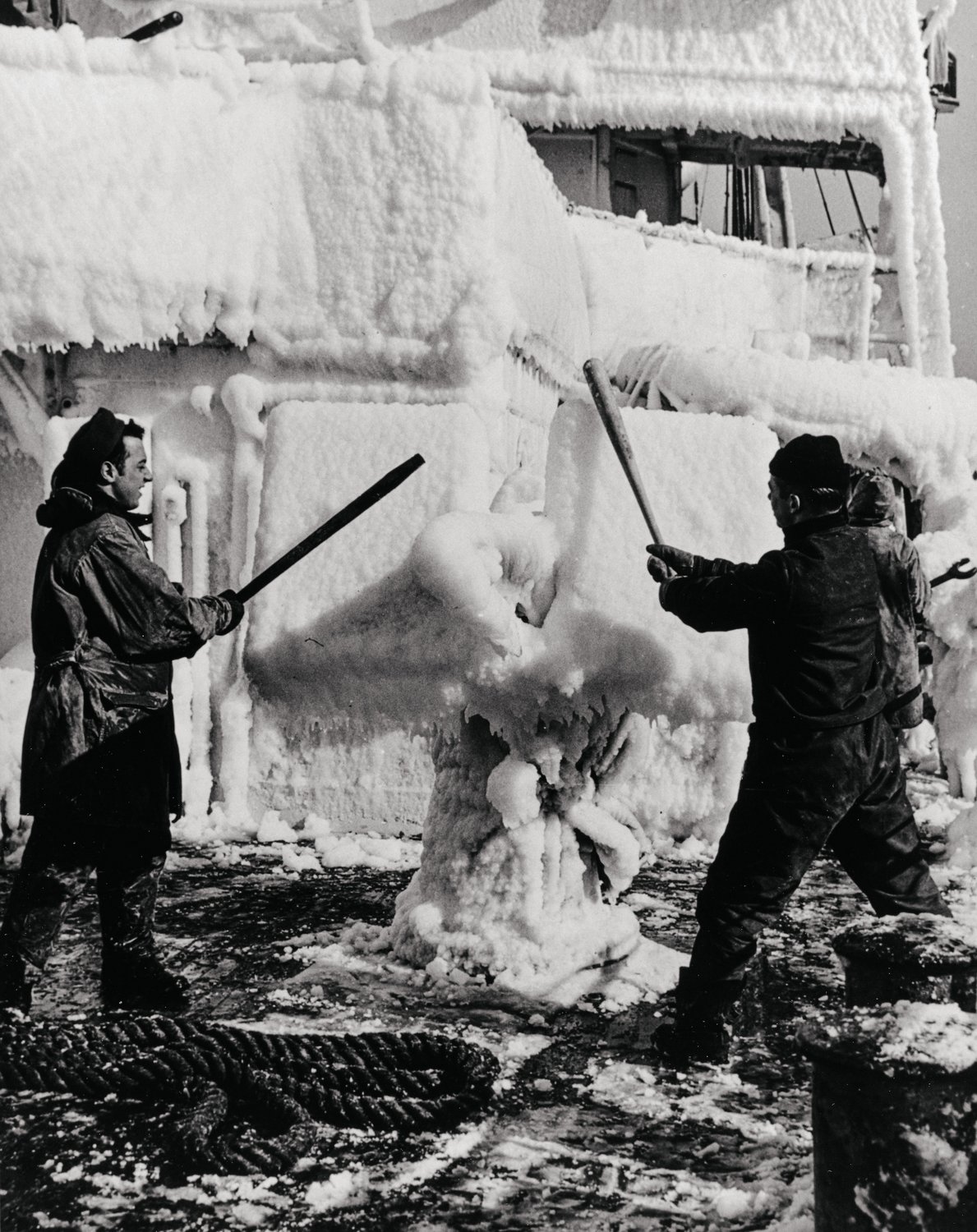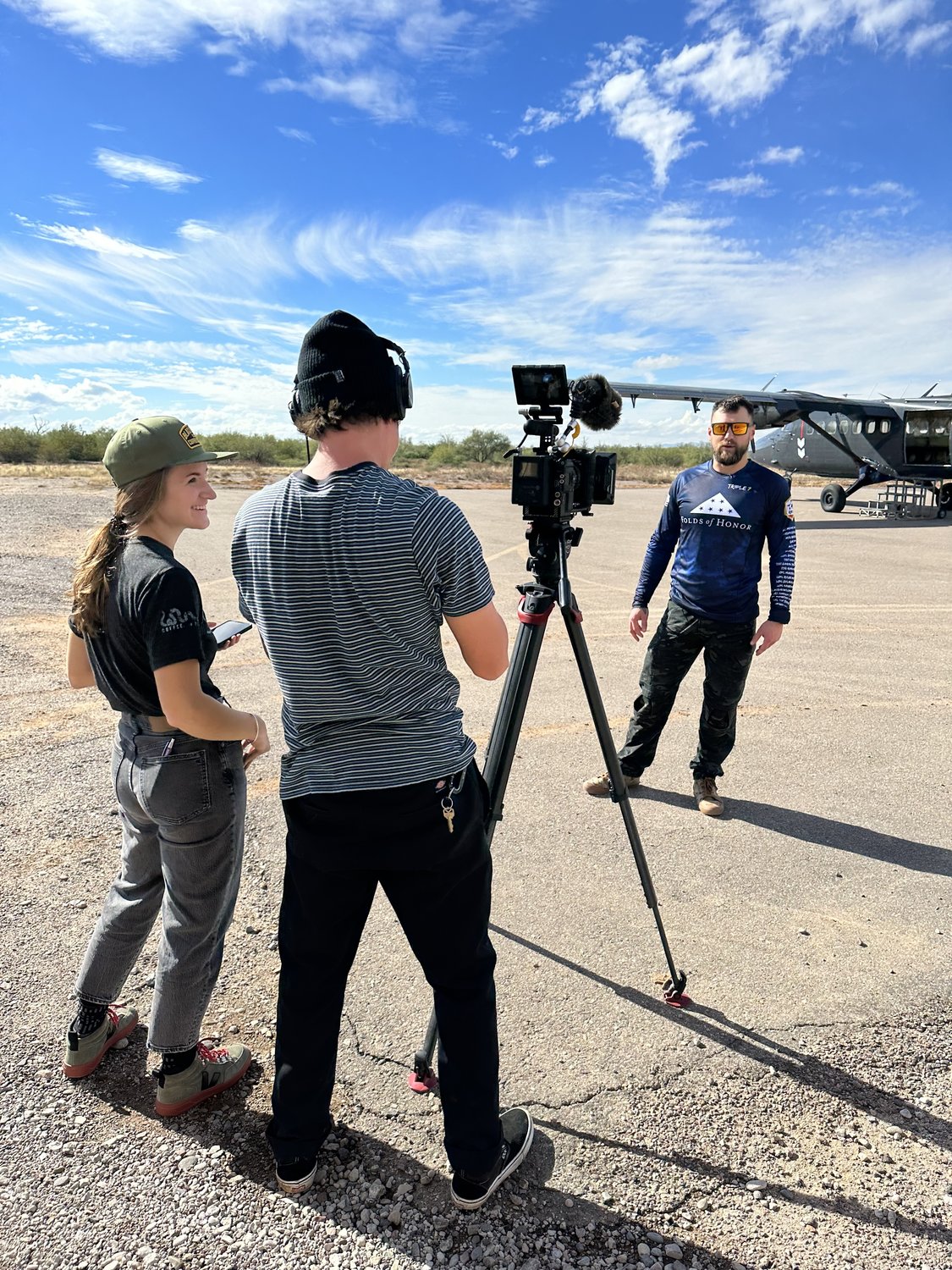The US Military in Greenland, America’s Defense Bastion in the High North

US special operators train near Pituffik Space Base, Greenland. The training was part of Arctic Edge 2023, a home defense exercise led by US Northern Command. US Army photo by Sgt. Andrew Adams.
In 2019, President Donald Trump floated the idea of purchasing Greenland from the Kingdom of Denmark. Although the half-baked proposition was scoffed at by the island country’s premier, as well as Denmark’s prime minister, the thinking behind it was definitely not new. Despite being scarcely populated and 80% covered in ice, Greenland has long been considered a vital strategic asset for the United States.
The world’s largest island, Greenland occupies a Mexico-size portion of the North Atlantic Ocean just between Canada’s territory of Nunavut and Iceland. During World War II, it provided an ideal pit stop for American aircraft en route to Europe. Fast-forward to the Cold War, and Greenland was again caught in the middle. Along the polar route, the country sat squarely between the United States and the Soviet Union. For that reason, in 1946, President Harry Truman secretly offered to buy Greenland from Denmark for $100 million worth of gold.
Of course, Denmark rejected Truman’s offer, but the kingdom still allowed the US to use its territory as a forward hub to thwart Moscow’s ambitions in the High North. Today, as Russia remilitarizes the Arctic, and China also makes inroads in the region, the US military’s foothold in Greenland, although relatively small, is again becoming a linchpin in America’s territorial defense.

A Royal Canadian Air Force CF-18 Hornet fighter jet prepares to depart Thule Air Base, Greenland, at the end of Exercise Amalgam Dart on June 17, 2021. Thule was renamed Pituffik Space Base in April 2023 and is the US military’s northernmost installation. Canadian military photo by Cpl. Dominic Duchesne-Beaulieu.
World War II
Because Mother Nature can tip the scales of war (for proof, see the English navy’s defeat of the Spanish Armada in 1588, or Napoleon’s failed invasion of Russia), military strategists have long understood the value of accurate weather forecasting.
Hence the “weather war” of the early 1940s, which saw the Allied and Axis powers compete for meteorological intel in the North Atlantic and Arctic oceans. Being an origin point for storms in Western Europe, Greenland was smack-dab in the middle of that conflict. Both sides knew that collecting weather data on the subcontinental island might help them win World War II.
After Denmark and Norway fell to Nazi Germany in the spring of 1940, the Allies worried that Greenland might be next. A flurry of geopolitical maneuvering ensued. Canada made plans to seize a cryolite mine in the Greenlandic town of Ivigtut (now Ivittuut), as the mine was vital to the production of aluminum, used to manufacture Allied aircraft. Meanwhile, Nazi loyalists were rotating through Danish and Norwegian radio and weather stations on the island’s desolate eastern seaboard to collect meteorological data for Berlin. And on several occasions, the British intercepted German-controlled Scandinavian ships en route to the east coast stations, leading the Allies to tear some of them down.

Service members clear ice from a US Coast Guard cutter and a 20mm gun while patrolling Greenland's waters during World War II. Note the variety of tools in use — including a baseball bat. US Naval History and Heritage Command photo.
The United States, which at the time was still technically neutral, wasn’t keen on any of these developments. Because Greenland lies in the Western Hemisphere, the Roosevelt administration believed the foreign activity on the island ran afoul of the Monroe Doctrine, which holds that any European political interference in the Americas may be considered hostile. As a result, the US Coast Guard was deployed to Greenland. In May 1940, the USCGC Comanche became the first American ship to make a port call there. But it wasn't until a year later, after Washington declared Greenland its protectorate, that the US military’s presence on the island began to really grow.
As America expanded its footprint in Greenland, the US military got to work furnishing the island with radio and weather stations, patrol bases, and airfields. The installations would aid in defending the territory from foreign invaders, and, eventually, constitute a transatlantic pit stop for the American military after the US officially entered the war in December 1941. All the while, Germany persisted in its efforts to collect meteorological intel along Greenland’s desolate east coast. In time, the Nazis would establish a total of four weather stations on the island. Two of those operated for a period and were then abandoned. The US military dismantled the other two, one with the only bombing raid carried out on Greenlandic soil during the war.
Related: Curtis LeMay: The WWII General Who Firebombed Japan
Cold War
After World War II ended, Denmark resumed its role as Greenland’s sovereign and protector. But after joining NATO in 1949, the Danes sought help in defending the island and eventually allowed the US to start constructing military bases there. Thus, as the Cold War got underway, Greenland would once again become a strategic bastion for the US. Except now, instead of being used as merely a pit stop and for weather-forecasting purposes, the island would serve as the cornerstone of America’s nuclear defenses.

A C-130 Hercules cargo plane sits on the flight line at Thule Air Base (now Pituffik Space Base), Greenland, on Aug. 9, 2022. US Space Force photo by Paul Honnick.
The US began quietly constructing Thule Air Base in 1951. Located more than 700 miles north of the Arctic Circle, where the small outpost Bluie West-6 had been during WWII, the new base would serve as one of America’s most important military installations during the Cold War. Thule sat squarely between the United States and Russia, which made it the perfect spot for nuclear bombers to refuel should they ever fly for Moscow. Turn the tables and the base made an ideal launch point for American fighters to intercept incoming Soviet aircraft. Furthermore, Thule was the northernmost US port where big ships could reliably resupply. For these reasons, the base housed roughly 10,000 troops at the height of the Cold War.
In 1959, the US began constructing another military base in Greenland. This one, called Camp Century, was located 150 miles east of Thule and under the island’s ice cap. The Pentagon publicly billed the outpost as a scientific research center, as well as a test case for constructing subterranean garrisons. In reality, however, Camp Century was the front for Project Iceworm, a top secret project to build a network of underground nuclear missile silos. The project was ultimately abandoned due to shifting ice.

In 2017, two airmen approach DYE-2, an abandoned Distant Early Warning (DEW) line site near Raven Camp on Greenland’s ice sheet. US Air Force photo by Tech. Sgt. Greg C. Biondo.
Also in the ’50s, the US military constructed four radar sites across Greenland’s barren ice sheet. The stations extended the Distant Early Warning (DEW) line, a communications network that ran 3,600 miles, from Alaska through Canada to Greenland. The system, which was entirely shut down by the 1990s, was intended to function as a sort of trip wire that would warn the West of an incoming nuclear attack by way of the Arctic. Sondrestrom Air Base, which was known as Bluie West-8 during World War II, served as the jumping-off point for resupply airlifts to the radar sites. Located in Kangerlussuaq — Greenland’s only inland town — Sondrestrom experienced more-predictable weather than the rest of the island.
In 1992, after the Iron Curtain fell, Sondrestrom Air Base was closed. However, a small detachment of service members from the New York Air National Guard still deploys to Kangerlussuaq every summer. While there, the Guardsmen train on the nearly 700,000-square-mile ice cap and resupply the National Science Foundation’s remote research camps. Meanwhile, Thule, which was renamed Pituffik Space Base in April 2023, remains the US military’s northernmost installation.
Read Next: The Battle of Midway: Where America’s March to Victory Began

Jenna Biter is a staff writer at Coffee or Die Magazine. She has a master’s degree in national security and is a Russian language student. When she’s not writing, Jenna can be found reading classics, running, or learning new things, like the constellations in the night sky. Her husband is on active duty in the US military. Know a good story about national security or the military? Email Jenna.
BRCC and Bad Moon Print Press team up for an exclusive, limited-edition T-shirt design!
BRCC partners with Team Room Design for an exclusive T-shirt release!
Thirty Seconds Out has partnered with BRCC for an exclusive shirt design invoking the God of Winter.
Lucas O'Hara of Grizzly Forge has teamed up with BRCC for a badass, exclusive Shirt Club T-shirt design featuring his most popular knife and tiomahawk.
Coffee or Die sits down with one of the graphic designers behind Black Rifle Coffee's signature look and vibe.
Biden will award the Medal of Honor to a Vietnam War Army helicopter pilot who risked his life to save a reconnaissance team from almost certain death.
Ever wonder how much Jack Mandaville would f*ck sh*t up if he went back in time? The American Revolution didn't even see him coming.
A nearly 200-year-old West Point time capsule that at first appeared to yield little more than dust contains hidden treasure, the US Military Academy said.












